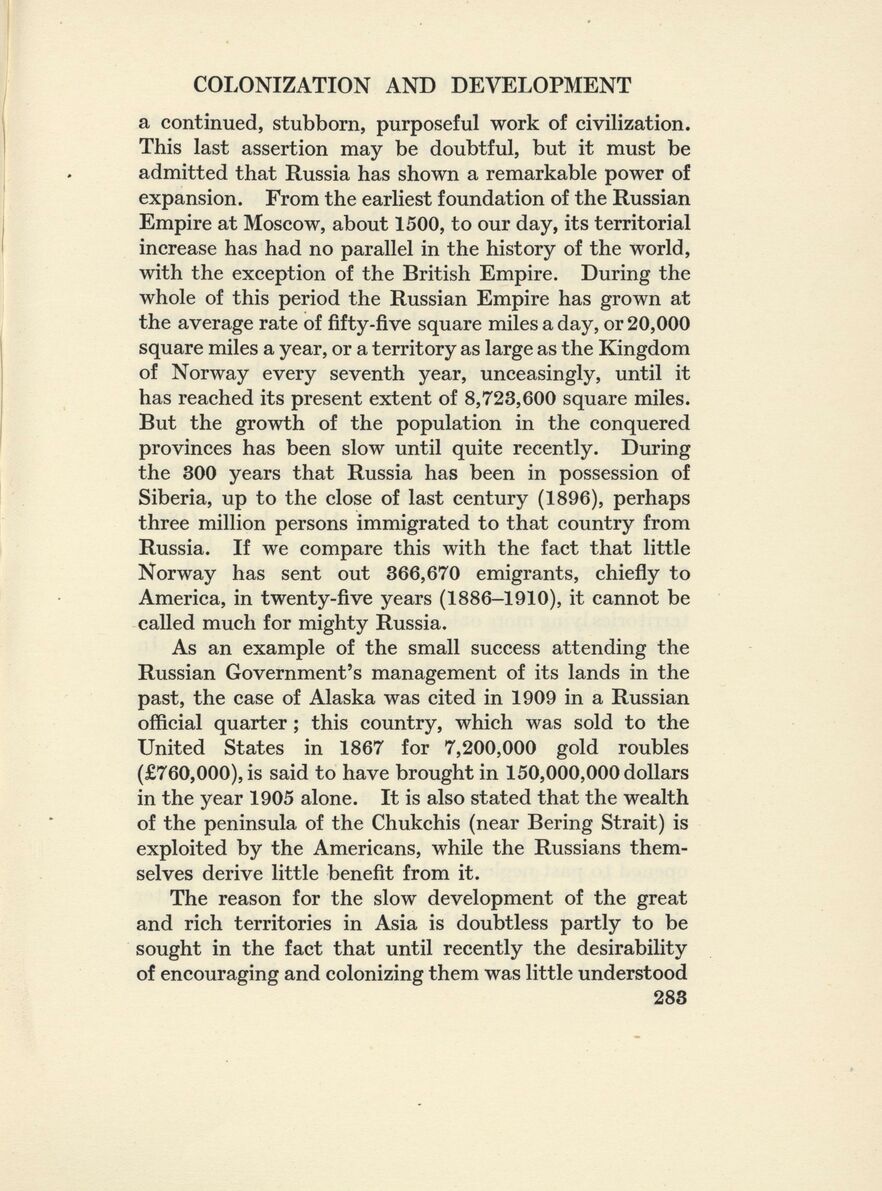
Full resolution (JPEG) - On this page / på denna sida - XIII. The colonization and development of Siberia

<< prev. page << föreg. sida << >> nästa sida >> next page >>
Below is the raw OCR text
from the above scanned image.
Do you see an error? Proofread the page now!
Här nedan syns maskintolkade texten från faksimilbilden ovan.
Ser du något fel? Korrekturläs sidan nu!
This page has never been proofread. / Denna sida har aldrig korrekturlästs.
COLONIZATION AND DEVELOPMENT
283
a continued, stubborn, purposeful work of civilization.
This last assertion may be doubtful, but it must be
admitted that Russia has shown a remarkable power of
expansion. From the earliest foundation of the Russian
Empire at Moscow, about 1500, to our day, its territorial
increase has had no parallel in the history of the world,
with the exception of the British Empire. During the
whole of this period the Russian Empire has grown at
the average rate of fifty-five square miles a day, or 20,000
square miles a year, or a territory as large as the Kingdom
of Norway every seventh year, unceasingly, until it
has reached its present extent of 8,723,600 square miles.
But the growth of the population in the conquered
provinces has been slow until quite recently. During
the 300 years that Russia has been in possession of
Siberia, up to the close of last century (1896), perhaps
three million persons immigrated to that country from
Russia. If we compare this with the fact that little
Norway has sent out 366,670 emigrants, chiefly to
America, in twenty-five years (1886-1910), it cannot be
called much for mighty Russia.
As an example of the small success attending the
Russian Governmenfs management of its lands in the
past, the case of Alaska was cited in 1909 in a Russian
official quarter ; this country, which was sold to the
United States in 1867 for 7,200,000 gold roubles
(£760,000), is said to have brought in 150,000,000 dollars
in the year 1905 alone. It is also stated that the wealth
of the peninsula of the Chukchis (near Bering Strait) is
exploited by the Americans, while the Russians them
selves derive little benefit from it.
The reason for the slow development of the great
and rich territories in Asia is doubtless partly to be
sought in the fact that until recently the desirability
of encouraging and colonizing them was little understood
<< prev. page << föreg. sida << >> nästa sida >> next page >>